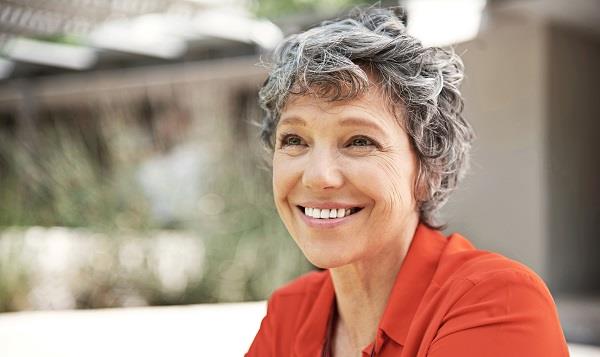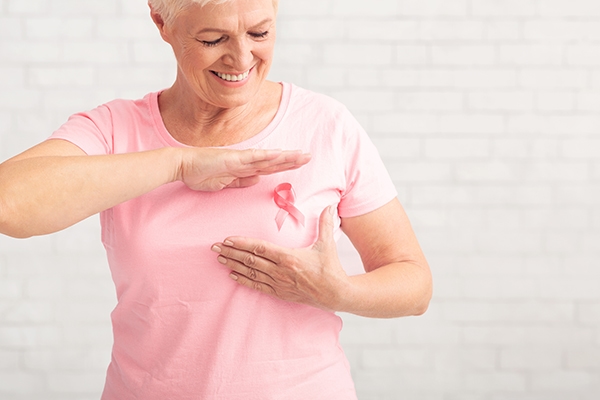Breast Cancer Awareness: Five ways to screen for breast cancer at home
Oct 3, 2020

October is Breast Cancer Awareness Month, which according to the Center for Disease Control (CDC), is the most common cancer found in women. One of the easiest ways to promote early detection, and therefore increase the chance of a positive outcome after diagnosis, is the self-exam. Self-exams should be completed on a regular basis, usually once a month, and should be part of overall breast care, including regularly scheduled doctor examinations as well as mammograms when applicable.
So, where do you start when screening at home? It’s important to establish a baseline of what is normal. This will help you recognize if there is a change or something that needs to be investigated further. For your self-exam, divide the breast into four sections: Upper/Outer (by the armpit), Upper/Inner, Lower/Outer and Lower/Inner. Keep an exam journal so you can remind yourself what is normal for you, and to help you identify any changes. It’s also important to know what you are looking for. During your at-home self-exam, make sure to look at the size and shape of your breasts and check for discoloration, dimpling or puckering, bulging, redness or rash, pain, changes in texture, lumps or hardness, nipple discharge or any other discrepancies that you’re observing from your established baseline.
Here are five ways to screen and complete a self-exam at home. You may also want to view illustrations which are available at BreastCancer.org.
Visual inspection
Stand in front of a mirror and complete your visual inspection. Look at your breasts with your arms down and then again with your arms raised straight up. Make sure to turn and inspect all angles. The mirror will give you the ability to clearly see what is under and on the side of your breasts. Some angles can be challenging, so using a mirror is a convenient and private way to complete your visual self-exam.
Check your pits
Many people don’t realize that breast tissue extends all the way up to your armpits and even across to your collarbone. Check this area by using the opposite hand to reach into your armpit and gently press to see if there is any thickening of the skin or lumps. Follow this across the top of your chest,even inspecting the area around your collarbone.
Up and down
Use the flat part of your fingers of the opposite hand to methodically and gently feel your way from the upper/outer area of your breast to the upper/inner area, traveling the length of the breast from top to bottom and side to side. Make sure to go all the way to the top (under your collarbone) and all the way to the bottom, hitting just under the breast where the tissue meets the start of your abdomen.
Little circles
Continue to keep your fingers flat, and start at the top of your breast and move around the circumference of the entire breast in little circles. Then move in toward the center and complete the little circles again until you meet the center at your nipple.
Notice the nipple
Look carefully at your nipples and determine if there is any discharge. This could be clear, milky or even bloody liquid or dried liquid in that area. Make note of any flaky nipple skin or changes to the skin texture, and also check for any puckering around the nipple or discoloration.
Many women choose to complete their at-home self-exams either entirely in front of the mirror or lying down. Another great place to complete these exams is in the shower. The soapy water can make it easier for hands to glide over skin allowing for a quick and friction-free exam. No matter where you decide to complete your self-exam, it’s important to make it a routine. Inconsistent exams will make it hard to establish a baseline and could allow alarming changes to go unnoticed. If you need assistance in learning how to complete a self-exam, ask your doctor to show you their preferred method.
Finally, it’s important to stay calm if you do find something unusual. Changes in texture or different lumps could be caused by a variety of circumstances, and are not necessarily indicative of breast cancer. It’s best to make an appointment with your doctor for further examination and investigation before jumping to a diagnosis on your own. The self-exam is simply a good way to keep tabs on your body, allowing you to seek further guidance if changes are present.
Visit or call your provider today if something seems suspicious during your breast exam.


